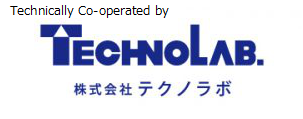The Reality of Marine Debris
Estimated marine plastic debris reached 8 million tons and continues to flow into the ocean yearly.
According to the 2010 data from Science magazine, the cumulative total ocean waste has risen to 150 million tons by now. This data is already quite old, and the current volume is estimated to be considerably higher than this.
As one of the causes, the German UFZ reports are shocking. It said that about 90% of the world’s marine plastic debris comes from 10 major rivers (5 in China, 3 in Southeast/South Asia, and 2 in Africa).
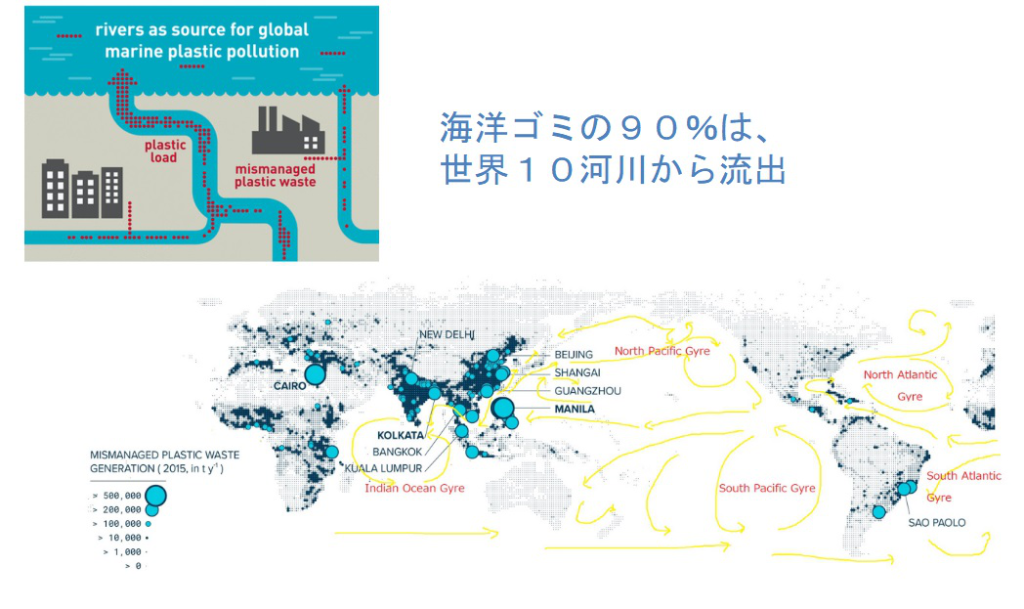
China is the largest emitter, followed by other Asian countries. It is said that the Asian region as a whole discharges 80% of the world’s marine plastic debris.
The ocean currents carry much of the marine plastic debris from Asia and drift ashore in Japan. Japan is the world’s most significant marine plastic waste hotspot.
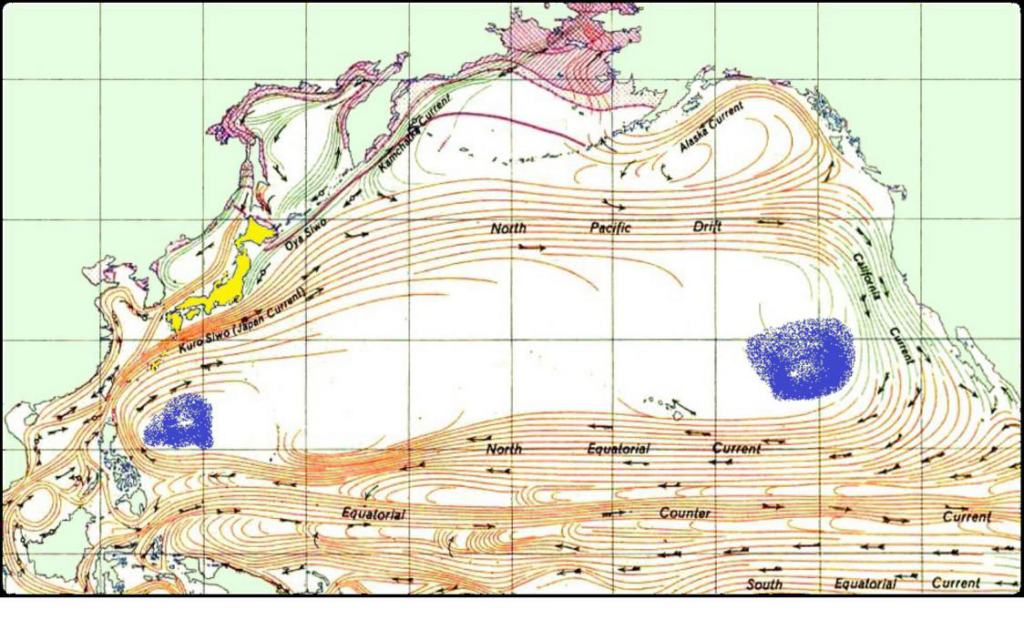
However, many Japanese have realized that much trash is drifting ashore.
The reason is that most Japanese live on the Pacific Ocean side, where the westerly winds constantly push trash out to sea, so it does not catch the attention of many Japanese people.
On the other hand, the Sea of Japan and the west coast of Kyushu wash up in unimaginable amounts of marine debris especially in winter.
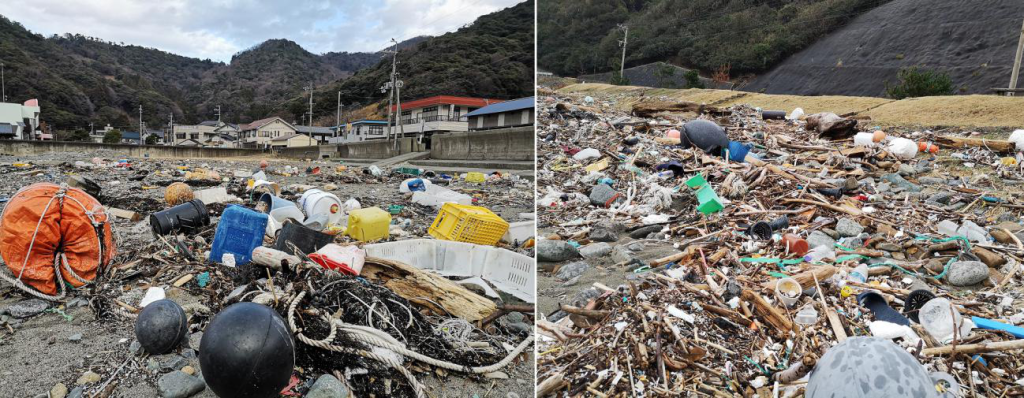
In these areas, local volunteer groups are unavoidably continuing to collect trash. It is becoming a solid hypothesis that ocean currents will carry garbage further away from the landing sites if we don’t gather the debris in these areas. By the time it travels halfway around the Pacific Ocean, it will have become many microplastics that will be preyed upon by fish.
The future may come much sooner than we think when fish can no longer eat fish due to the effects of microplastics.
buøy’s vision for the future
Dutch organizations and others trying to collect garbage in the Pacific Garbage Belt are making headlines. However, there is far more plastic drifting ashore in Japan than they can manage, and if left unchecked, this will become a huge problem. For example, more than 3,000 tons of marine plastic debris washes ashore yearly on Tsushima island in Nagasaki Prefecture alone.
Local volunteer groups are the leading collectors of this plastic debris in Japan, but most of it arrives in the Sea of Japan in winter, along the western coast of Kyushu, and on remote islands.
The coastline in the Sea of Japan is very snowy, and very few know those volunteer work in winter.
They are the heroes of the project, and many people should know them. As we learned about these people through the production of “buøy,” we came to believe.
That is why “buøy” buys found plastic as vintage material. And we label all of our products with the place of collection (so that we can identify the collector).
That way, we can send messages from those who have bought “buøy” to the volunteer— “This is how I use it! “Thank you for picking up the buøy,” etc.)
We can deliver our sincere message to the volunteers, lighting a fire in their hearts.
The development of “buøy” products is a meaningful activity in that it can achieve the goal of improving the environment and promoting the local industry simultaneously. After accumulating experience in Japan, buøy’s goal is to expand similar projects to overseas rivers.
While it may be essential to be pessimistic about current problems at times, we hope to continue our activities to steadily and gradually improve the future.
We will continue to work to improve the future.
Our comment:
Today’s recycling methods for ocean plastic waste.
Many recycling methods are useless when it comes to marine debris.
Marine waste mixes many different types of plastics, is contaminated with chemicals while drifting on the ocean, and also adheres to many salt and shellfish. In the end, ocean-drifting plastics are either paid to be landfilled or sent to combustion, where heat recovery is not possible.
This fact discourages people from picking up trash.
No matter how hard they try, the trash that washes ashore every year never decreases. And don’t you think it is a real hardship that the garbage they have toiled over has to be burned or landfilled at the expense of each municipality’s taxpayers?
Even if you are too far away to help pick up trash on the beach,
We design a framework with our “buoy” that one can support volunteer groups financially by buying products. We can also help them mentally, showing that the product from their trash is used carefully in others’ lives.
We will continue to work to improve the future.
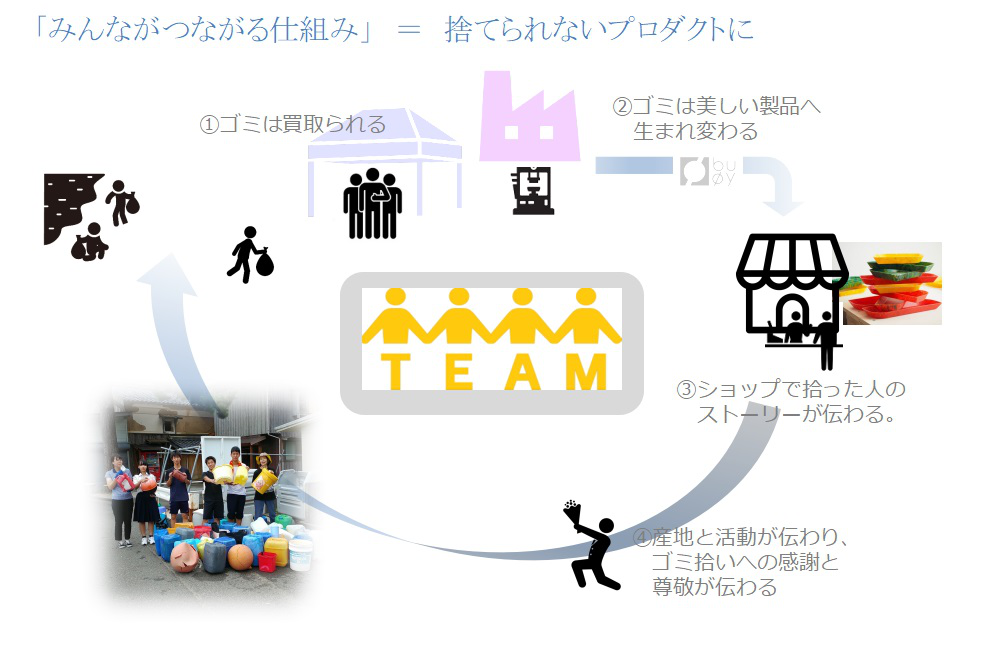
Many might hate plastic trash so far, but if plastic could become a bridge connecting people in areas where trash has drifted and other areas, less people would hate plastic from now.
We, as some plastic lovers, believe discarded plastic may have significance in this meaning.

